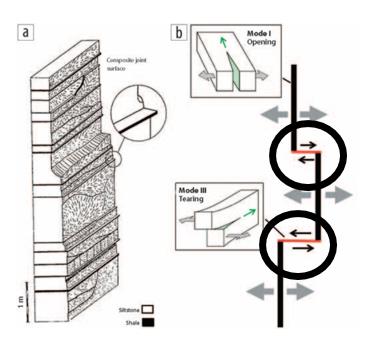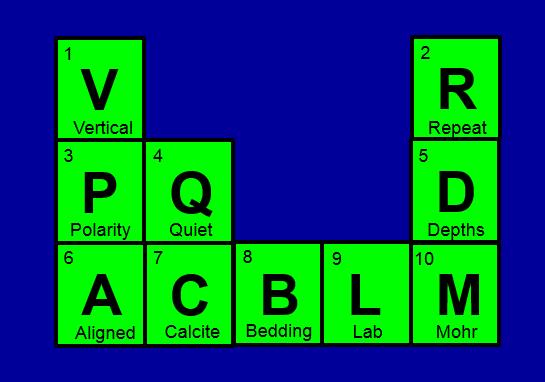Microseismic SIG: Bedding Plane Slip and The Periodic Table of Frac Microseismic* - Dec 7th

Sponsored by Microseismic Corporation
NEW Event Location:
Microseismic
10777 Westheimer, Suite 110
Houston, TX 77042
NOTE: You Must be Logged In to Register.
Speaker: Dave Diller, NanoSeis
co-author: Stephen Wilson, Seismogenic
There is ambiguity in the fracture plane solution for microseismic events – a vertical dip-slip event could also be horizontal slip event. In 2013 a theory emerged from several sources stating that many (perhaps most?) of the microseismic events that are observed during hydraulic fracturing are caused by bedding plane slip (Rutledge et al., 2013; Stanek and Eisner, 2013). Figure 1 shows a side view sketch of one possible geometry:

Figure 1. A side view sketch of one proposed geometry of bedding plane (red) slip. From Rutledge et al., 2015.
The corollary to the bedding plane slip theory is the notion that commonly observed aligned vertical strike-slip events are caused by cross-fracture jogs. The combined theories fits many observations that are otherwise hard to explain, so many in fact, that we call them (very much tongue in cheek, and with apologies to Dmitri Mendeleev) “The Periodic Table of Frac Microseismic”.

Figure 2. A somewhat dated version of “The Periodic Table of Microseismic”.
In the meeting we will discuss the meaning of the “elements” that comprise the table, which will be somewhat updated from the figure shown above.
If the bedding plane slip theory is not controversial, it should be. The implications are that the number and size of microseismic events are primarily a function of the nature of the bedding planes, and their intersection with a growing hydraulic fracture. This is hugely important because it means that the seismogenic signature of failure may be able to tell us something about the frac itself and rather than some indirect distal response to leak-off and effective stress change. If this is the case then the meaning behind energy release, b-values, stress drop, fracture surface area and other aspects of source mechanisms change dramatically. They offer an exciting future if we can understand the mechanism and the meaning and consequently use that information to understand frac growth and perhaps better optimise the stimulation process.
Speaker: Dave Diller, NanoSeis
Dave Diller is the president of NanoSeis, shown here enjoying a visit to Oman. He has reached the stage in his career where he tends to minimize the description of his professional experience. He founded NanoSeis in 2011 when he realized that he was too cranky to be a good employee anymore.
THANK YOU TO OUR GENEROUS SPONSOR:
